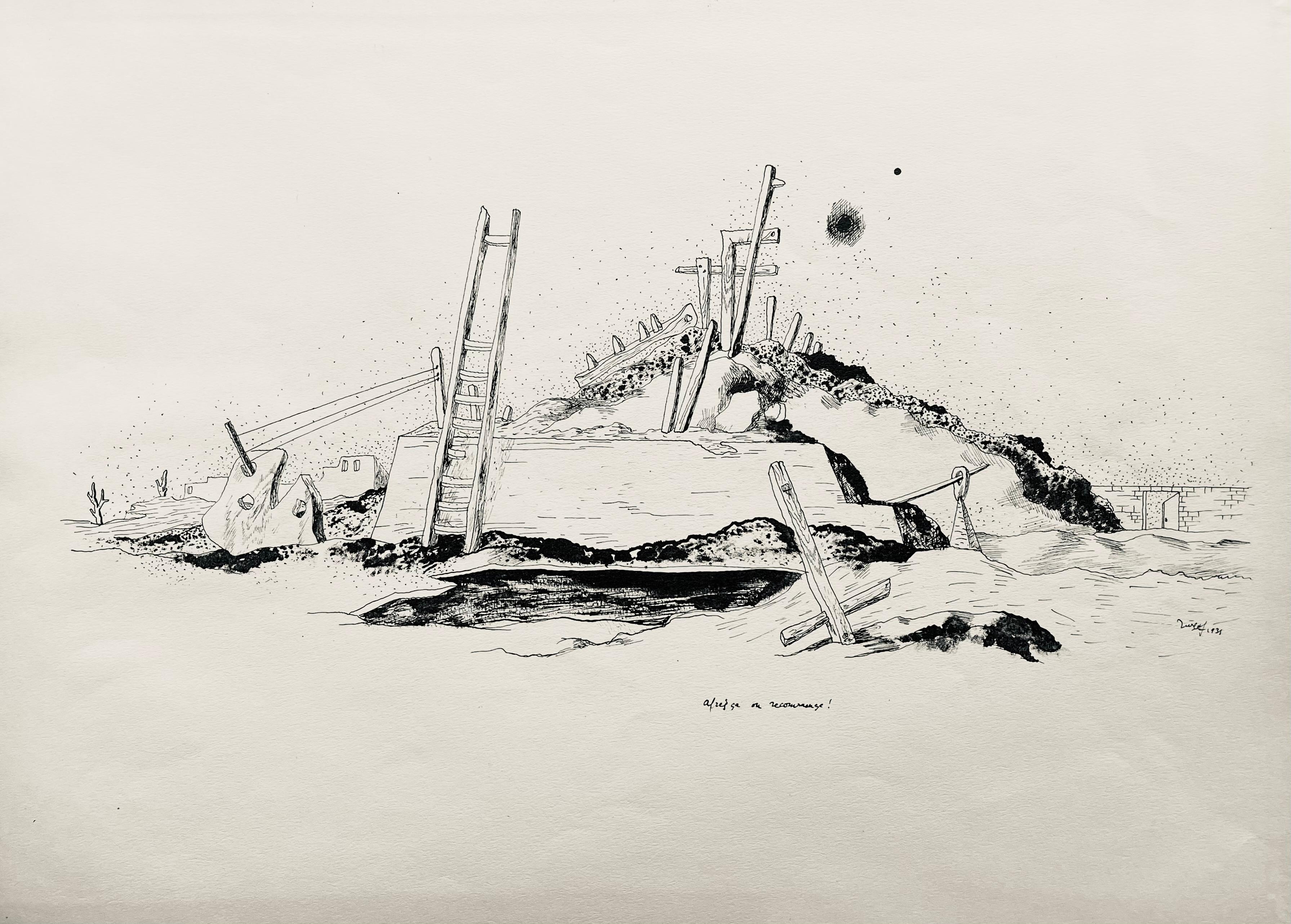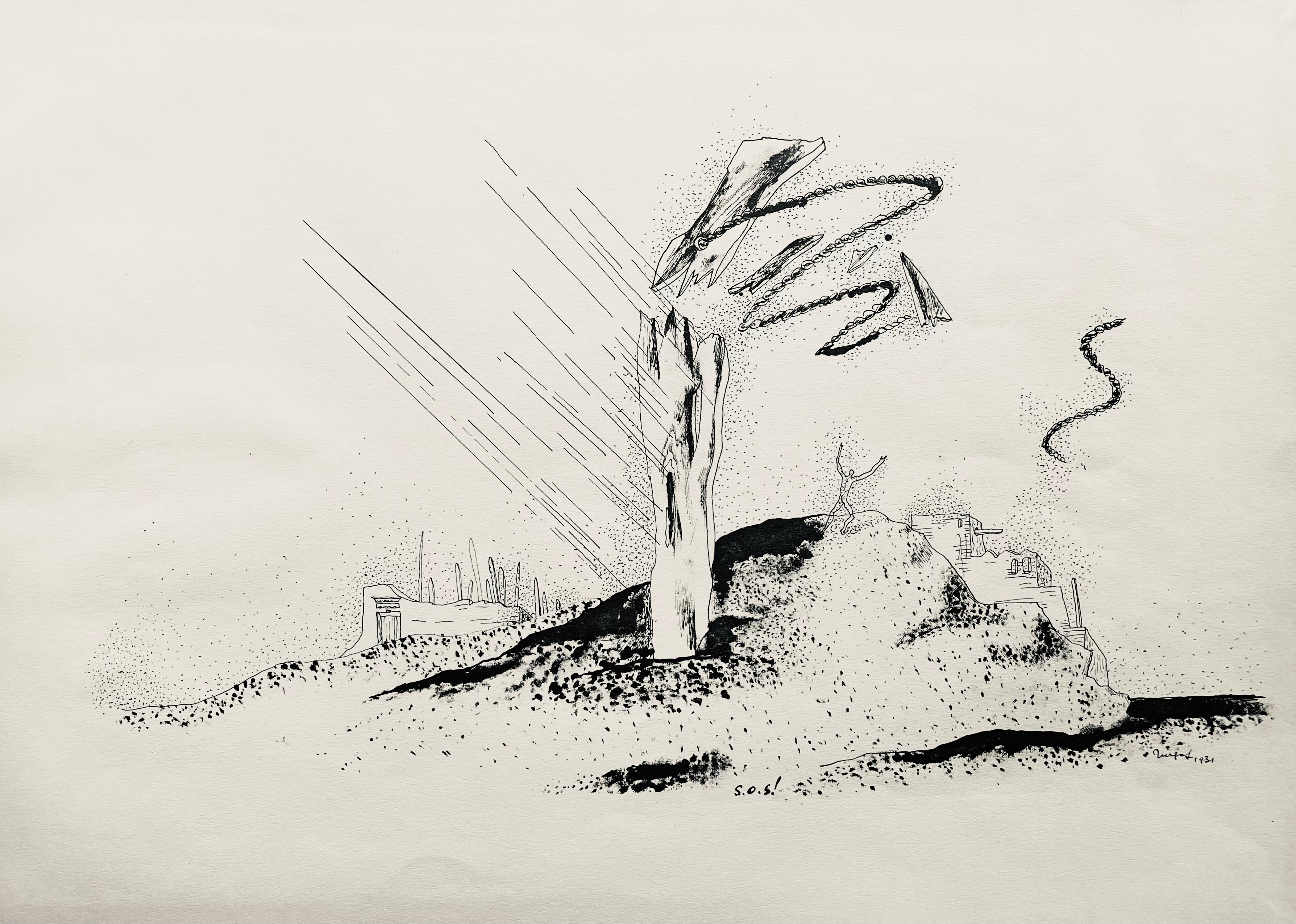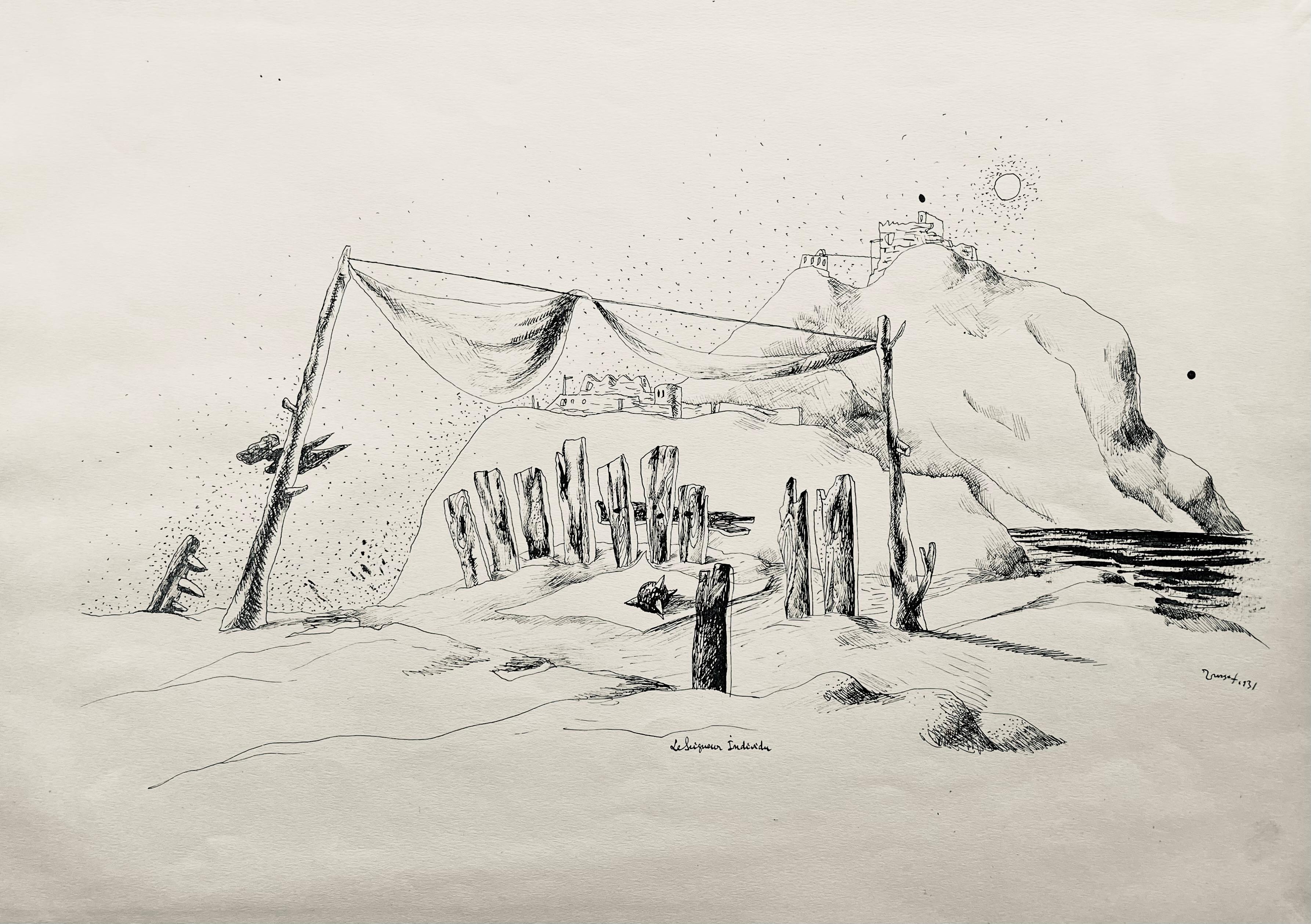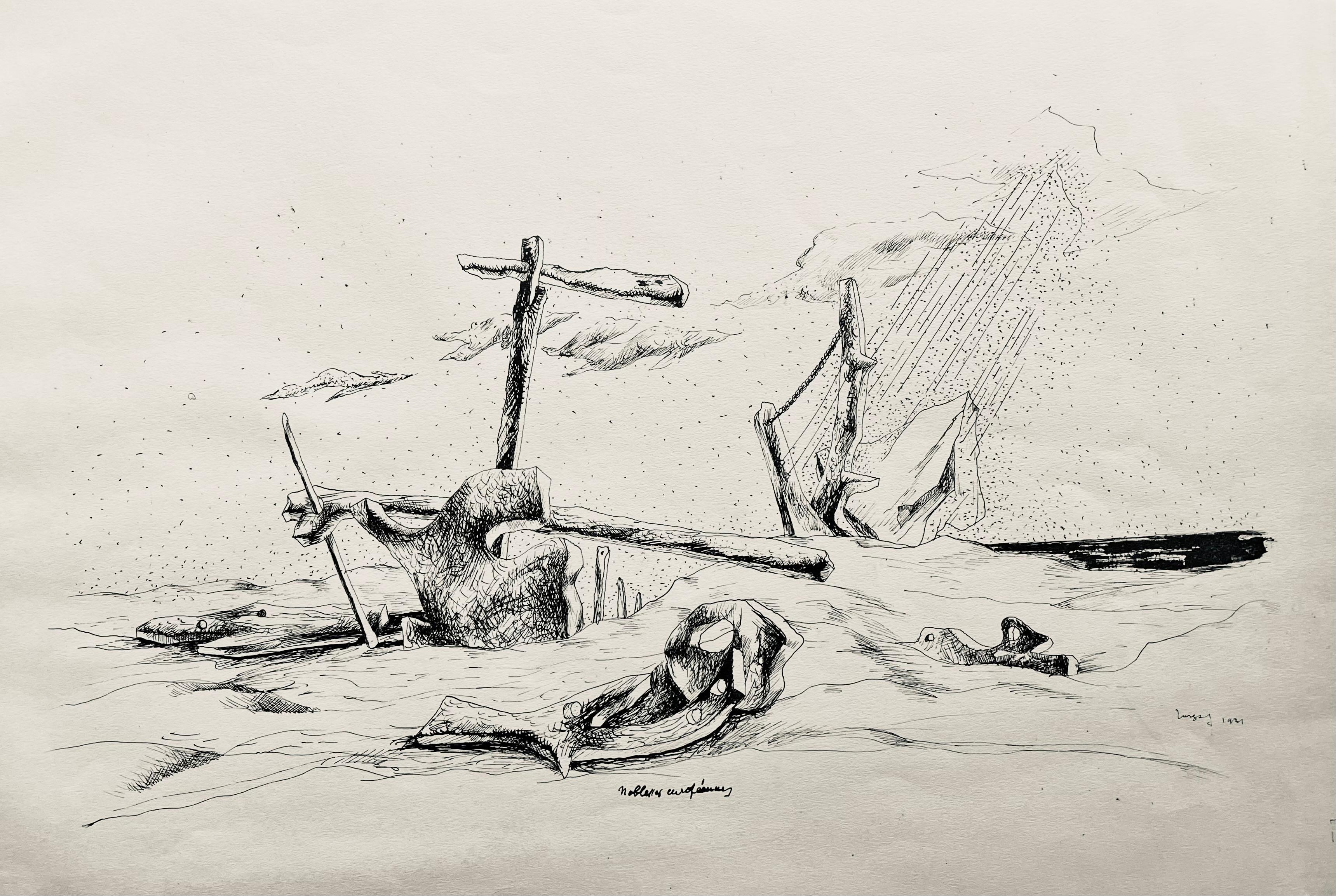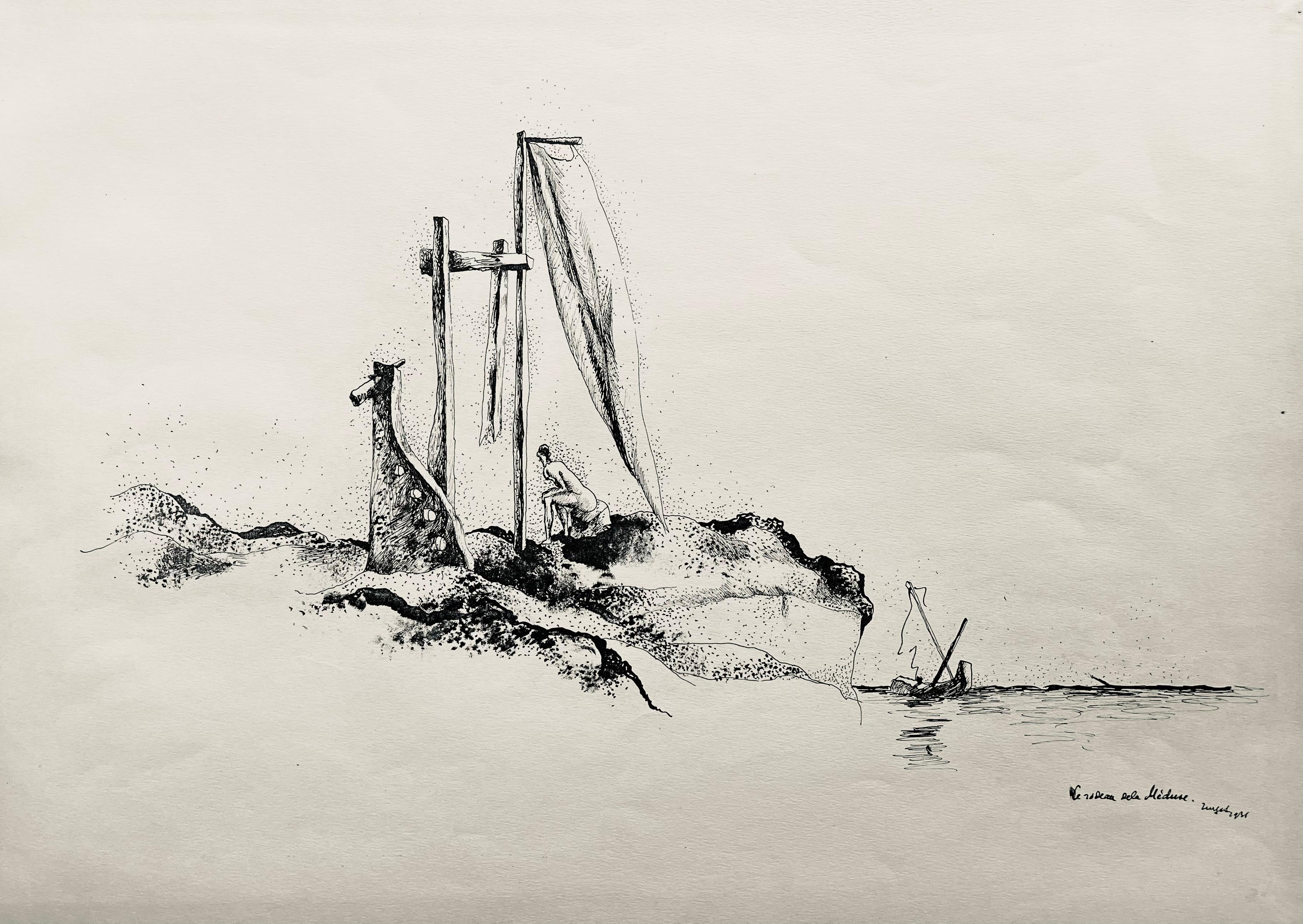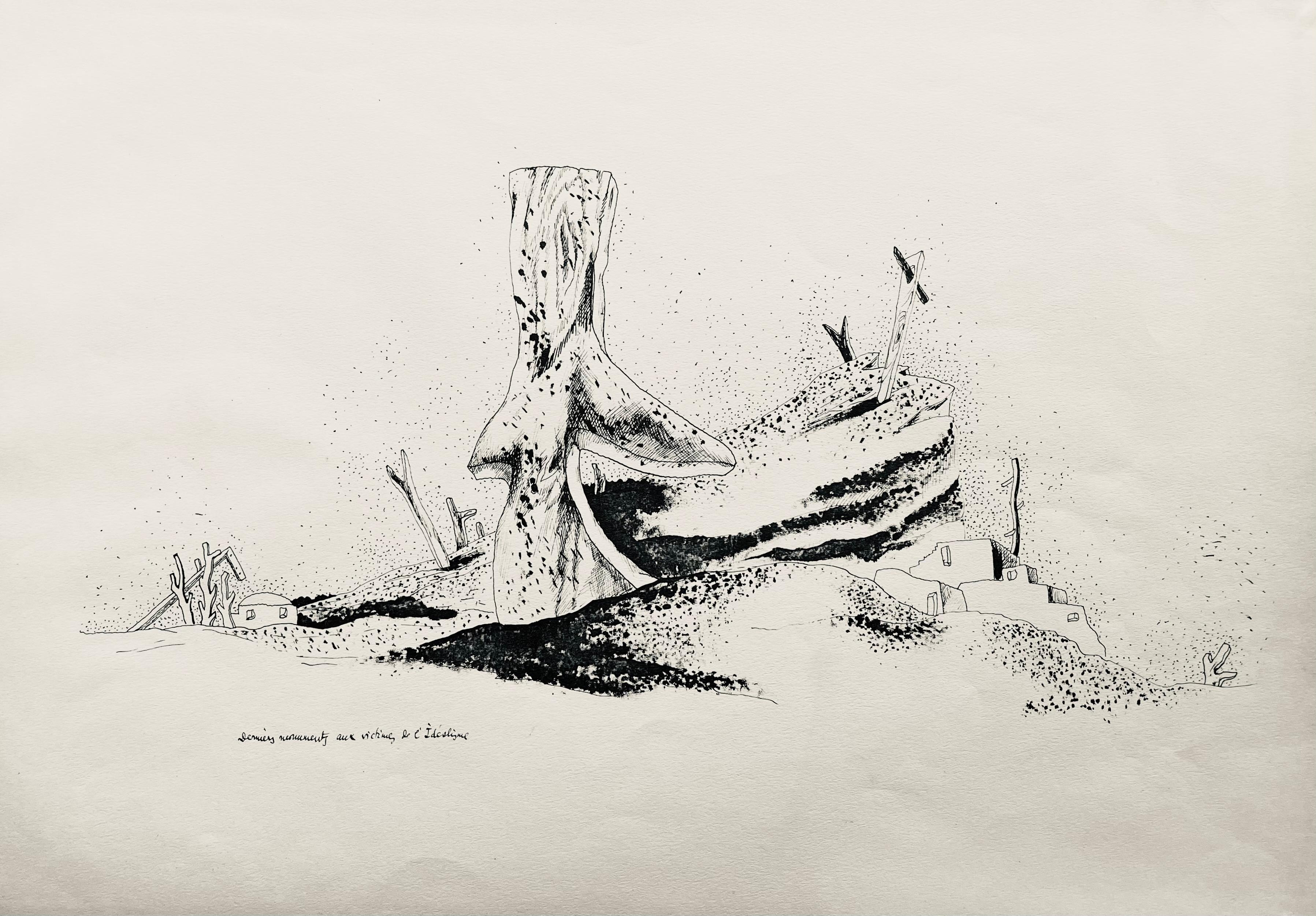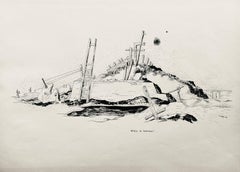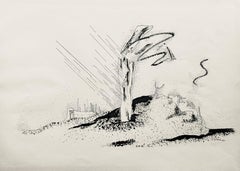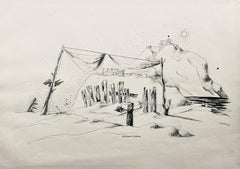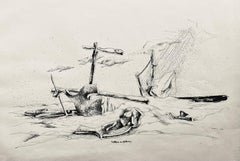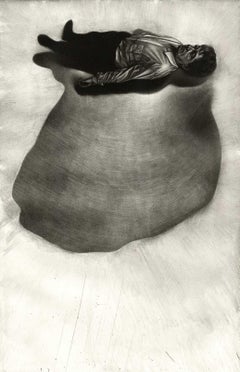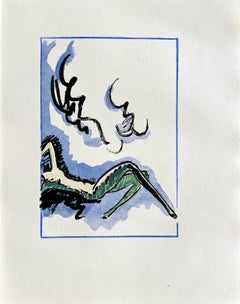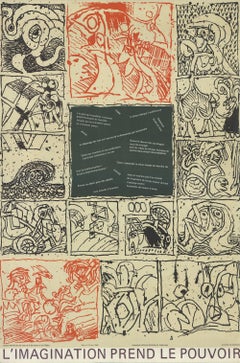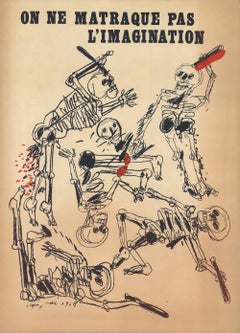Items Similar to Lurçat, une étoile sans étable, huit dessins à la plume (after)
Want more images or videos?
Request additional images or videos from the seller
1 of 11
Lurçat, une étoile sans étable, huit dessins à la plume (after)1933
1933
$716
$89520% Off
£541.98
£677.4820% Off
€621.78
€777.2320% Off
CA$1,006.42
CA$1,258.0220% Off
A$1,107.52
A$1,384.4120% Off
CHF 580.79
CHF 725.9820% Off
MX$13,441.25
MX$16,801.5620% Off
NOK 7,259.75
NOK 9,074.6820% Off
SEK 6,872.97
SEK 8,591.2120% Off
DKK 4,640.96
DKK 5,801.2120% Off
About the Item
Lithograph on vélin paper. Unsigned and unnumbered, as issued. Good condition. Published by Aux Éditions Jeanne Bucher, Paris, 1933; printed by F. Duval, February 20, 1933. Notes: From the volume, Jean Lurçat huit dessins à la plume reproduits en phototypie. Excerpted from the folio (translated from French), This volume, whose boards were drawn from the presses of F. Duval, was printed on February 20, 1933. The edition includes D examples, the first eight, each containing one of the original drawings, were numbered by hand from I to VIII.
JEAN LURCAT (1892-1966) was a French artist noted for his role in the revival of contemporary tapestry. In 1921, Jean Lurçat met Louis Marcoussis, he discovered Picasso and Max Jacob, and created decoration and costumes for Le spectacle de la Compagnie Pitoeff: "He who receives slaps", and then spent the autumn near the Baltic sea. The following year, he created his fifth tapestry, Le Cirque (the circus), for Mme. Cuttoli. His first personal exhibition took place in Paris in April and September. He made a large decoration on a wall (no longer visible today) at the Castle of Villeflix. Then he went to Berlin, where he met Ferruccio Busoni.
- Creation Year:1933
- Dimensions:Height: 12.625 in (32.07 cm)Width: 17.625 in (44.77 cm)
- Medium:
- Movement & Style:
- After:Jean Lurçat (1892 - 1966, French)
- Period:
- Condition:
- Gallery Location:Southampton, NY
- Reference Number:1stDibs: LU1465214805742
About the Seller
4.9
Platinum Seller
Premium sellers with a 4.7+ rating and 24-hour response times
Established in 1978
1stDibs seller since 2021
1,189 sales on 1stDibs
Typical response time: <1 hour
- ShippingRetrieving quote...Shipping from: Southampton, NY
- Return Policy
Authenticity Guarantee
In the unlikely event there’s an issue with an item’s authenticity, contact us within 1 year for a full refund. DetailsMoney-Back Guarantee
If your item is not as described, is damaged in transit, or does not arrive, contact us within 7 days for a full refund. Details24-Hour Cancellation
You have a 24-hour grace period in which to reconsider your purchase, with no questions asked.Vetted Professional Sellers
Our world-class sellers must adhere to strict standards for service and quality, maintaining the integrity of our listings.Price-Match Guarantee
If you find that a seller listed the same item for a lower price elsewhere, we’ll match it.Trusted Global Delivery
Our best-in-class carrier network provides specialized shipping options worldwide, including custom delivery.More From This Seller
View AllLurçat, aprèsça on recommence, huit dessins à la plume (after)
By Jean Lurçat
Located in Southampton, NY
Lithograph on vélin paper. Unsigned and unnumbered, as issued. Good condition. Published by Aux Éditions Jeanne Bucher, Paris, 1933; printed by F. Duval, February 20, 1933. Notes: Fr...
Category
1930s Surrealist Figurative Prints
Materials
Lithograph
$716 Sale Price
20% Off
Free Shipping
Lurçat, s.o.s., huit dessins à la plume (after)
By Jean Lurçat
Located in Southampton, NY
Lithograph on vélin paper. Unsigned and unnumbered, as issued. Good condition. Published by Aux Éditions Jeanne Bucher, Paris, 1933; printed by F. Duval, February 20, 1933. Notes: Fr...
Category
1930s Surrealist Figurative Prints
Materials
Lithograph
Lurçat, le seigneur individu, huit dessins à la plume (after)
By Jean Lurçat
Located in Southampton, NY
Lithograph on vélin paper. Unsigned and unnumbered, as issued. Good condition. Published by Aux Éditions Jeanne Bucher, Paris, 1933; printed by F. Duval, February 20, 1933. Notes: Fr...
Category
1930s Surrealist Figurative Prints
Materials
Lithograph
$716 Sale Price
20% Off
Free Shipping
Lurçat, noblesses européennes, huit dessins à la plume (after)
By Jean Lurçat
Located in Southampton, NY
Lithograph on vélin paper. Unsigned and unnumbered, as issued. Good condition. Published by Aux Éditions Jeanne Bucher, Paris, 1933; printed by F. Duval, February 20, 1933. Notes: Fr...
Category
1930s Surrealist Figurative Prints
Materials
Lithograph
$716 Sale Price
20% Off
Free Shipping
Lurçat, le radeau de la méduse, huit dessins à la plume (after)
By Jean Lurçat
Located in Southampton, NY
Lithograph on vélin paper. Unsigned and unnumbered, as issued. Good condition. Published by Aux Éditions Jeanne Bucher, Paris, 1933; printed by F. Duval, February 20, 1933. Notes: Fr...
Category
1930s Surrealist Figurative Prints
Materials
Lithograph
$716 Sale Price
20% Off
Free Shipping
Lurçat, derniers monuments aux victimes, huit dessins à la plume (after)
By Jean Lurçat
Located in Southampton, NY
Lithograph on vélin paper. Unsigned and unnumbered, as issued. Good condition. Published by Aux Éditions Jeanne Bucher, Paris, 1933; printed by F. Duval, February 20, 1933. Notes: Fr...
Category
1930s Surrealist Figurative Prints
Materials
Lithograph
$716 Sale Price
20% Off
Free Shipping
You May Also Like
Personne Seule Etendue
By Maurice Pasternak
Located in New Orleans, LA
Maurice Pasternak has created a surreal landscape that includes traditional images of a sun-filled sky, dark shadows cast on water and through leafy trees all under the guise of thre...
Category
Late 20th Century Surrealist Landscape Prints
Materials
Mezzotint
La Garçonne
By Kees van Dongen
Located in OPOLE, PL
Kees Van Dongen (1877-1968) - La Garçonne
Original Lithograph, pochoir from 1925.
Arches paper (no watermark).
Dimensions of work: 23.5 x 18 cm
Publisher: E. Flammarion Éditeur.
...
Category
1920s Modern Figurative Prints
Materials
Lithograph
1968 'L'imagination Prend Le Pouvoir'
By Pierre Alechinsky
Located in Brooklyn, NY
This rare original poster by Pierre Alechinsky is a powerful artistic and historical document from the May 1968 Paris student protests. Printed on billboard paper using a home press,...
Category
1960s Contemporary Prints and Multiples
Materials
Offset
$560 Sale Price
20% Off
1968 'On Ne Matraque Pas L'Imagination'
By Antonio Seguí
Located in Brooklyn, NY
This original lithograph by Argentine artist Antonio Seguí was produced in 1968 amidst the fervent cultural and political climate of the time. Printed on billboard paper with a home ...
Category
1960s Contemporary Prints and Multiples
Materials
Mixed Media
$440 Sale Price
37% Off
(after) Jean Bazaine - pochoir
By Jean Bazaine
Located in Henderson, NV
Medium: pochoir. Printed in 1958 for the art revue XXe Siecle (issue number 11) and published in Paris by San Lazzaro. Sheet size: 9 1/2 x 12 3/8 inches (242 x 315 mm). Signed in the...
Category
1950s Prints and Multiples
Materials
Lithograph, Stencil
(after) Jean Bazaine - lithograph
By Jean Bazaine
Located in Henderson, NV
Medium: lithograph (after the drawing). Printed in 1958 for the art revue XXe Siecle (issue number 11) and published in Paris by San Lazzaro. Sheet size: 12 3/8 x 9 1/2 inches (314 x...
Category
1950s Prints and Multiples
Materials
Lithograph
More Ways To Browse
Picasso Etching Vollard Suite
Picasso Les Dejeuners
Picasso Lithograph 1974
Picasso Silkscreen
Polo Antiques
Pop And Scott
Punk Original
R C Gorman Originals
Rene Magritte Poster
Retro Library Posters
Reynolds Etching
Richard Lane
Robert Conover
Robert Von Neumann
Ruth Gleaning
Salvador Dali Bullfight
Salvador Dali Color Etching
Salvador Dali Flower
